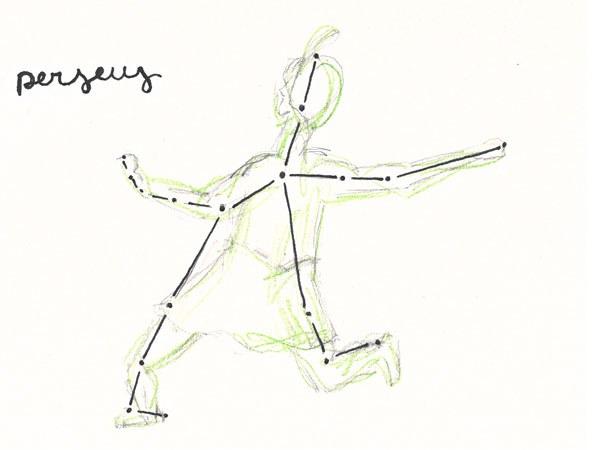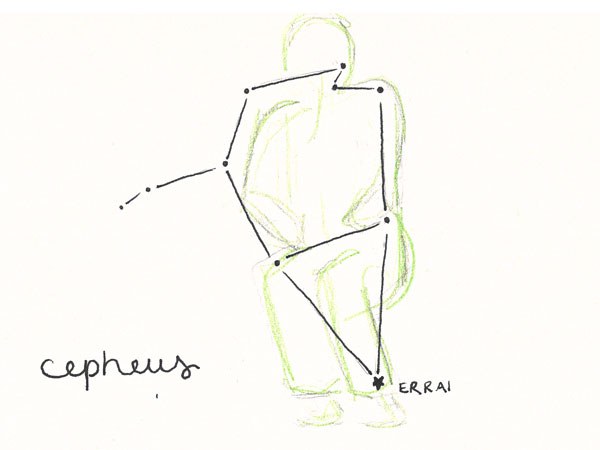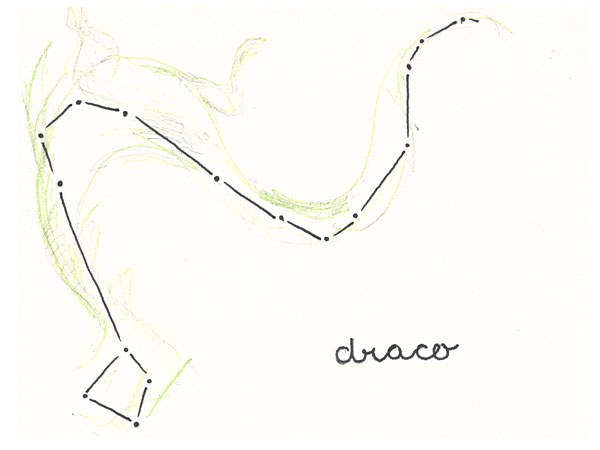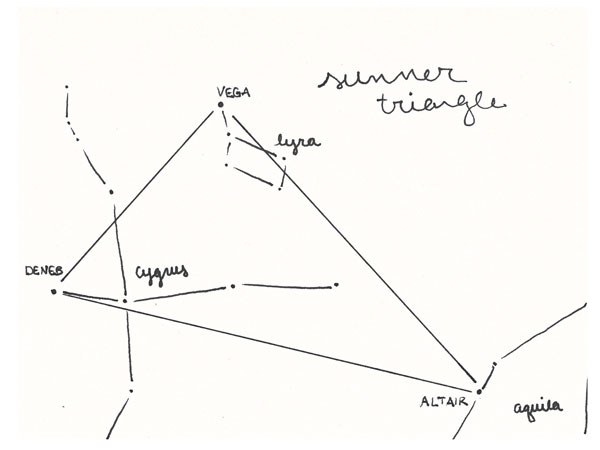Stargazing--an ancient tradition that has continued to enthrall humans through the centuries. Whether you’re 7 or 77, there is just something incredible about looking up at the night sky and observing those tiny orbs of light that are so far away from our own planet. Learn more about constellations in Central Oregon’s summer sky with Part 2 of our 2 part guide. Then, use an app or two to help you find them the next time you gaze up in wonder.
Once again, a note: Many of the constellations listed are part of what is known as the Ancient 48. The 2nd century astronomer Ptolemy wrote Almagest, which contained a star catalogue of 48 constellations. These 48 constellations are often referred to as the Ancient 48. In the medieval period, Almagest was the authoritative text on astronomy across Europe, the Middle East, and northern Africa.
Perseus lies next to Andromeda and is one of the Ancient 48. It is known for its annual Perseid meteor shower.
To find Perseus, first identify Cassiopeia. If Cassiopeia is forming a “W,” Perseus will be below the left part of the zig-zag. If Cassiopeia is forming an “M,” Perseus will be below the right part of the zig-zag.
Myth: Perseus has many myths associated with him, living a very storied life. In one of the stories, Perseus is tasked with bringing King Polydectes the head of Medusa as a wedding present (King Polydectes hoped this would kill Perseus). Luckily, the gods favored Perseus. Athena gave him a bronze shield, Hephaestus made him a sword from diamond, Hades gave Perseus a helmet that made him invisible, and Hermes gave him winged sandals. Armed with these gifts, Perseus was able to decapitate Medusa. Later, Perseus rescued Andromeda, then married her. Perseus is typically depicted in the night sky holding the head of Medusa in one hand and his jeweled sword in the other.
Cepheus is part of the Perseus family of constellations and is one of the Ancient 48. It is home to the Garnet Star, one of the largest known stars in the Milky Way.
To locate Cepheus, look for a shape that resembles a stick house that a child would draw (with a square for the base and a triangle for the roof). The tip of the roof generally points northward and is close to Polaris.
Myth: King Cepheus of Ethiopia was married to Cassiopeia and father to Andromeda. Zeus placed him in the sky because he was descended from one of Zeus’ loves, the nymph Io. Cepheus’ brother, Phineus, showed up at the celebration of Perseus’ and Andromeda’s wedding. He claimed that Andromeda had been promised to him and fought Perseus. Being outnumbered by Phineus and his supporters, Perseus had to use the head of Medusa to turn his enemies to stone. Unfortunately, Cepheus and Cassiopeia did not look away from Medusa’s head in time, and they were also turned to stone.
Draco, which is Latin for “dragon,” is part of the Ursa Major family of constellations. It is a circumpolar constellation, meaning that it never sets below the horizon for many observers.
Draco is located between the Big Dipper and the Little Dipper. If you find these constellations, Draco’s tail is near the bowl of the Big Dipper, then snakes around the Little Dipper.
Myth: Draco represents Ladon, a dragon that guarded the golden apples in the gardens of the Hesperides. The golden apple tree was a wedding present to Hera when she married Zeus. Atlas’ daughters, the Hesperides, were to tend the gardens and the tree. Ladon was placed there as extra protection so that the Hesperides would not pick any apples from it. Meanwhile, Heracles (the Greek version of Hercules) was tasked with stealing some golden apples from the tree. In order to get to the golden apples, Heracles killed Ladon. Hera was so saddened by the death that she placed Ladon in the sky. Draco is usually depicted in the night sky with one of Heracles' feet on its head.
The Summer Triangle is made up of the 3 brightest stars of the constellations Aquila, Cygnus, and Lyra. In fact, the Summer Triangle is so prominent that it was used for navigation in the past. The brightest star in the eastern sky, Vega, is at the top of the Summer Triangle.
To find the Summer Triangle, first find Vega and its constellation, Lyra. Vega is one of the brightest stars high in the sky in the summer. Underneath it is a distinctive trapezoid. From there, you can identify Cygnus and Aquila with their bright stars making up the remainder of the Summer Triangle.
Myth: The constellations Aquila and Cygnus are linked in Greek mythology. Zeus fell in love with the goddess Nemesis, but she did not return his affection. Zeus turned himself into a swan and persuaded Aphrodite to turn into an eagle and pretend to pursue him. Nemesis saw the swan being chased by the eagle and offered it refuge. To commemorate his successful plot, Zeus placed the swan and eagle in the sky.
Hopefully this is a good start to your stargazing journey. To help you even more, use one of these free apps: SkyView Lite, Star Walk 2, or Star Chart. Happy constellation viewing!
Learn more:


